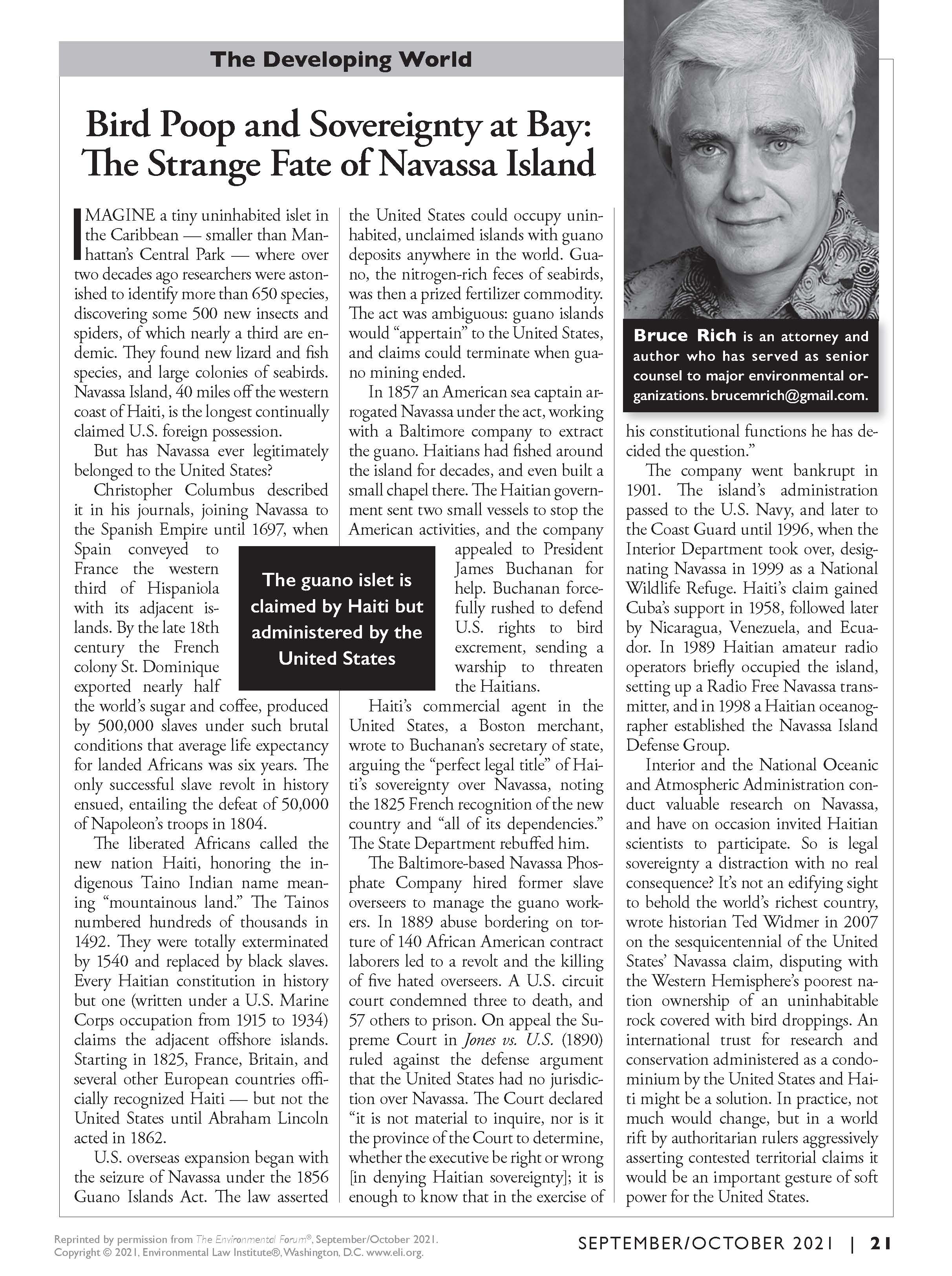- Bruce Rich
- Environmental Forum
- September-October, 2021
- p. 21
Imagine a tiny uninhabited islet in the Caribbean—smaller than Manhattan’s Central Park—where over two decades ago researchers were astonished to identify more than 650 species,The Researchers found new lizard and fish species, and large colonies of seabirds. Navassa Island, 40 miles off the western coast of Haiti, is the longest continually claimed U.S. foreign possession. But has Navassa ever legitimately belonged to the U.S.?
Christopher Columbus described it in his journals, joining Navassa to the Spanish Empire until 1697 when Spain conveyed to France the western third of Hispaniola with its adjacent islands. By the late 18th century the French colony St. Dominique exported nearly half the world’s sugar and coffee, produced by 500,000 slaves under such brutal conditions that average life expectancy for landed Africans was six years. The only successful slave revolt in history ensued, entailing the defeat of 50,000 of Napoleon’s troops in 1804. The liberated Africans called the new nation Haiti, honoring the indigenous Taino Indian name meaning “mountainous land.” Every Haitian constitution in history but one (written under a U.S. Marine Corps occupation from 1915 to 1934) claims the adjacent offshore islands. Starting in 1825, France, Britain, and several other European countries officially recognized Haiti—but not the United States until Abraham Lincoln acted in 1862.
U.S. overseas expansion began with the seizure of Navassa under the 1856 Guano Islands Act. The Act asserted the U.S. could occupy uninhabited, unclaimed islands with guano deposits anywhere in the world. In 1857 an American sea captain arrogated Navassa under the Act, working with a Baltimore company to extract the guano. Haiti’s commercial agent in the U.S., a Boston merchant, wrote to then President James Buchanan’s Secretary of State arguing the “perfect legal title” of Haiti’s sovereignty over Navassa, noting the 1825 French recognition of the new country and “all of its dependencies.” The State Department rebuffed him. Navassa’s administration passed to the U.S. navy, and later to the Coast Guard until 1996. The Department of the Interior took over, designating Navassa in 1999 as a National Wildlife Refuge. Haiti’s claim gained Cuba’s support in 1958, followed later by Nicaragua, Venezuela, and Ecuador. In 1989 Haitian amateur radio operators briefly occupied the island setting up a Radio Free Navassa transmitter, and in 1998 a Haitian oceanographer established the Navassa Island Defense Group
It’s not an edifying sight to see the world’s richest country, wrote historian Ted Widmer in 2007 on the sesquicentennial of the U.S. Navassa claim, disputing with the Western Hemisphere’s poorest nation ownership of an uninhabitable rock built on bird droppings. An international trust for research and conservation administered as a condominium by the U.S. and Haiti might be a solution. In practice not much would change, but in a world rift by authoritarian rulers aggressively asserting contested territorial claims it would be an important gesture of soft power for the U.S.



